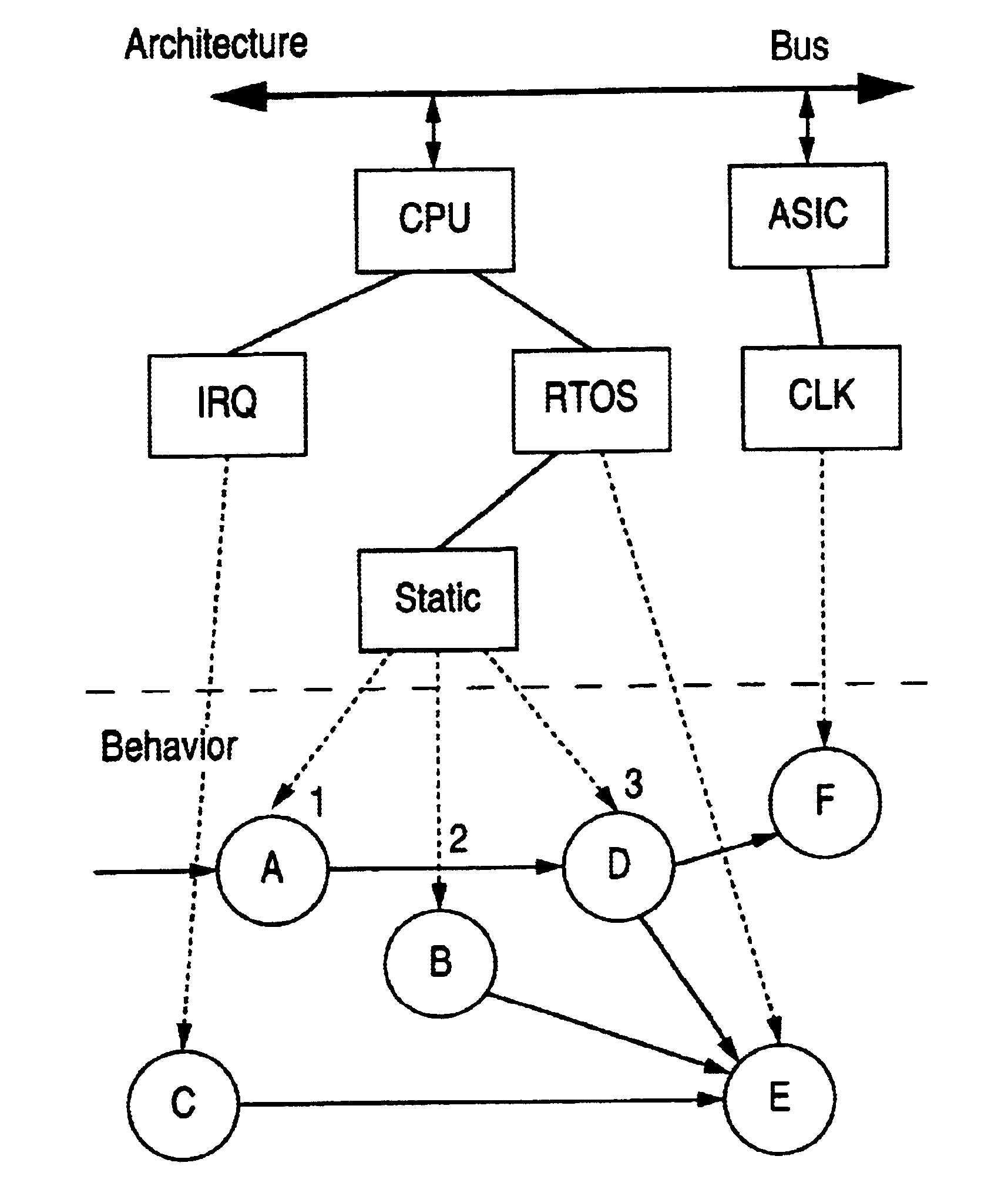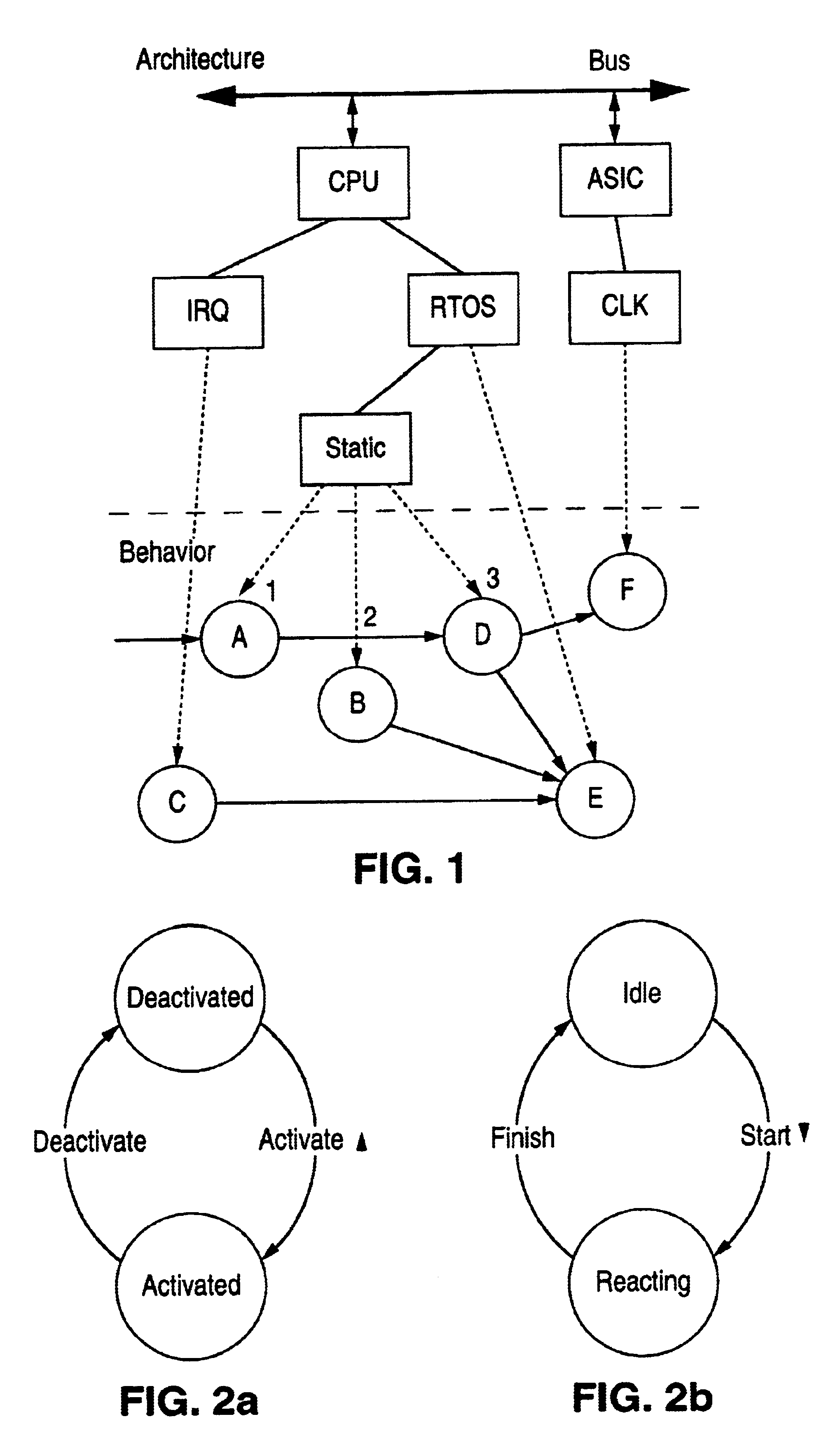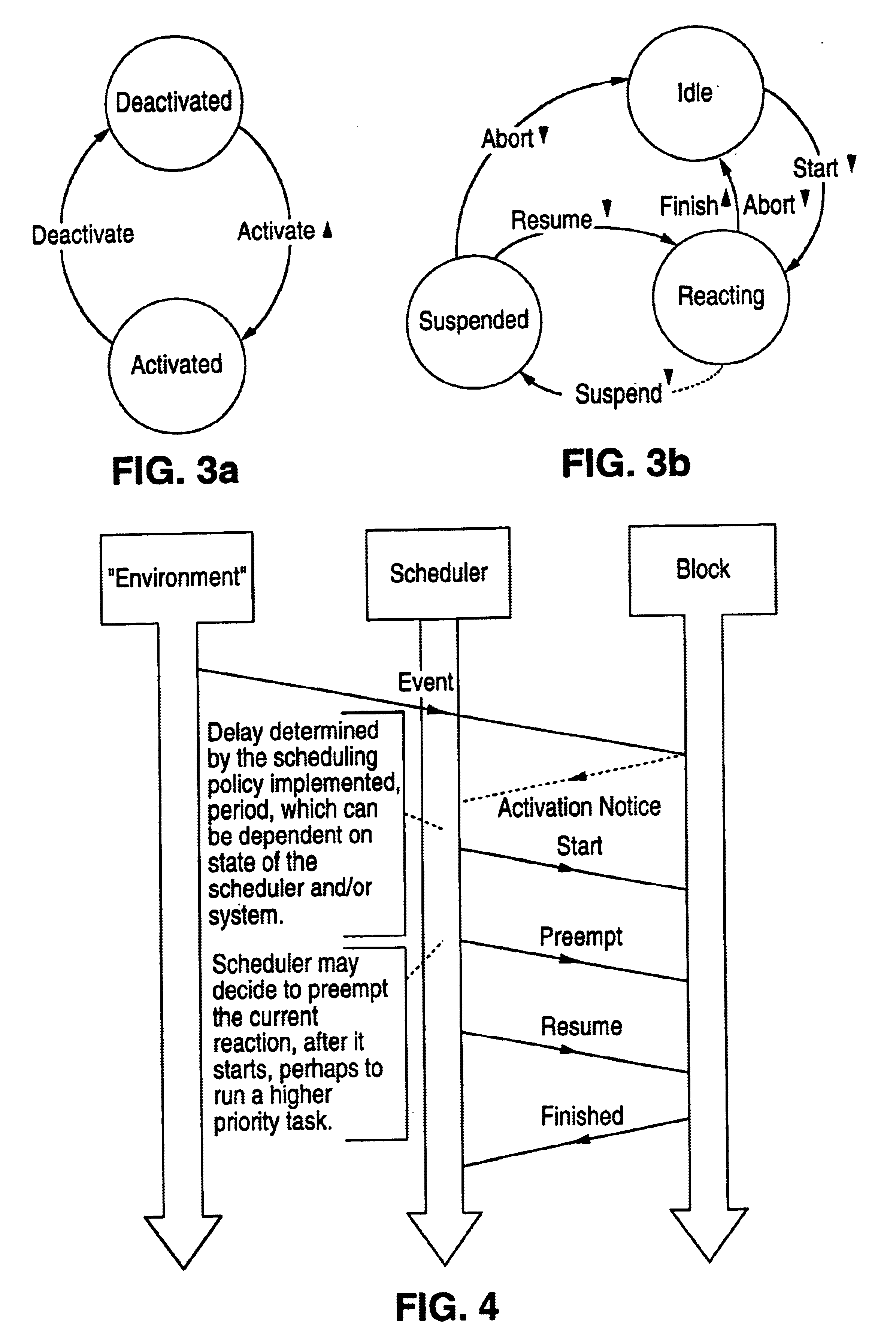Method for hierarchical specification of scheduling in system-level simulations
- Summary
- Abstract
- Description
- Claims
- Application Information
AI Technical Summary
Benefits of technology
Problems solved by technology
Method used
Image
Examples
Embodiment Construction
[0042]Two orthogonal models, one of a scheduler and one of a “schedulable,” comprise the overall modeling of scheduling in the invention. The two models interact by sending messages to each other via a simple protocol. The protocol itself is implemented by a pair of abstract interfaces, which in turn are implemented in concrete schedulable and scheduler objects in the simulator.
[0043]FIG. 1 illustrates the design flow in VCC which consists of a) composing behavior; b) capturing architecture; and c) mapping behavior onto architecture. The area above the dotted line in FIG. 1 provides the scheduler components of which the CPU, ASIC and clock (CLK) are physical entities and of which the remaining IRQ (interrupt request), RTOS real timing operating system) and a static scheduler are software entities. The static scheduler is synthesized by VCC and comprises a simple sequential execution of the behaviors' run functions. The behaviors, which are below the dotted line of FIG. 1, are repres...
PUM
 Login to View More
Login to View More Abstract
Description
Claims
Application Information
 Login to View More
Login to View More - R&D
- Intellectual Property
- Life Sciences
- Materials
- Tech Scout
- Unparalleled Data Quality
- Higher Quality Content
- 60% Fewer Hallucinations
Browse by: Latest US Patents, China's latest patents, Technical Efficacy Thesaurus, Application Domain, Technology Topic, Popular Technical Reports.
© 2025 PatSnap. All rights reserved.Legal|Privacy policy|Modern Slavery Act Transparency Statement|Sitemap|About US| Contact US: help@patsnap.com



